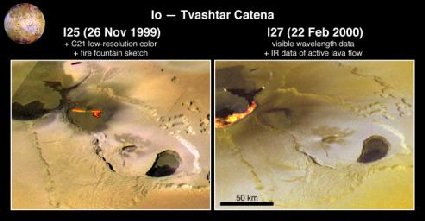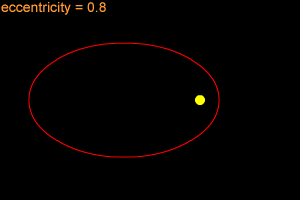Click on image for full size
Courtesy of NASA/JPL
Related links:
Moon Found Orbiting Asteroid
News story originally written on October 11, 1999
A moon was discovered orbiting the asteroid, Eugenia. This is only the second time in history that a satellite has been seen circling an asteroid. A special mirror allowed scientists to find the moon from a telescope on Earth.
The mirror corrects for the blurring caused by Earth's atmosphere. This effect is called adaptive optics. The Hubble Telescope was originally launched so scientists could see objects without looking through the atmosphere. Now, they can study objects from Earth as well.
Making this discovery with the newly developed adaptive optics moves ground-based astronomy to the forefront in exploring neighboring objects in our solar system," said Vernon Pankonin, manager of NSF's planetary astronomy program.
Asteroid satellites are very difficult to find. The first one, called Dactyl, was discovered by the Galileo spacecraft in 1993. It orbits the asteroid Ida. Eugenia's moon was even harder to find, because the asteroid is much brighter than its moon. It's like looking for a flashlight beam in sunlight.
Now that the moon has been found, scientists can use it to calculate Eugenia's density. It turns out that the asteroid is very light and not much denser than water. It is most likely made of packed rock or ice.
This is only the second one known, and we've searched for a couple of decades already," said David Merline of the Southwest Research Institute based in San Antonio, Texas.














